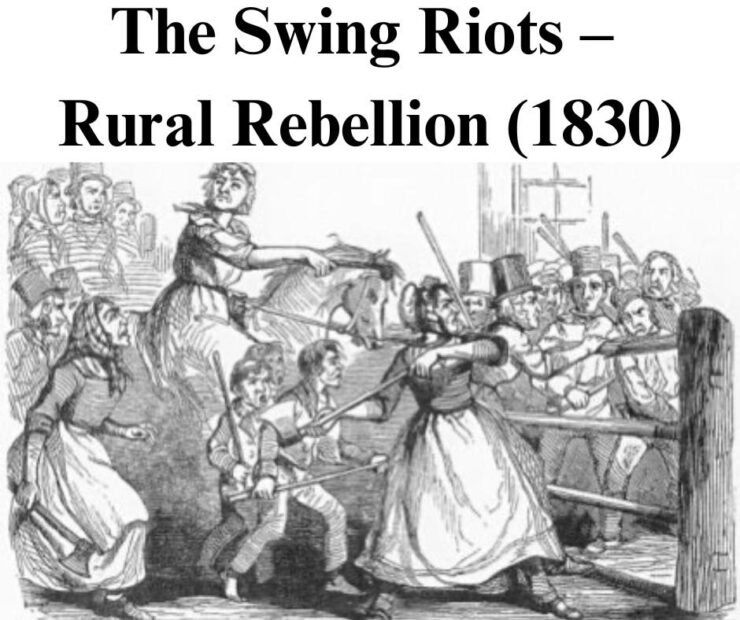
The Swing Riots – Rural Rebellion (1830)
In 1830, the quiet English countryside erupted in flames.
Farm workers, driven by poverty, low wages, and the rise of machines, began to rebel — smashing threshing machines, burning barns, and sending anonymous threats signed by the mysterious “Captain Swing.”
This became known as the Swing Riots — a cry for help from rural England.
What Caused the Riots?
•The Industrial Revolution introduced mechanical threshers that replaced manual labor.
•Wages for agricultural workers were crushingly low.
•The Poor Law offered minimal support, and workhouses were dreaded.
•Landowners seemed indifferent to growing rural misery.
What Happened?
•Thousands of workers in southern and eastern England attacked farms, destroyed machinery, and protested against landowners.
•Threatening letters were sent to farmers and magistrates, all ominously signed “Captain Swing.”
•The government responded harshly:
•Over 2,000 protesters arrested
•19 executed, many others transported to Australia.
Legacy:
•The Swing Riots highlighted the deep tensions caused by industrial change and inequality.
•They led to increased awareness of rural hardship and eventually contributed to Poor Law reforms and labor rights movements.
The Swing Riots were not just a rebellion —
they were a desperate message from a forgotten class demanding to be seen and heard.
